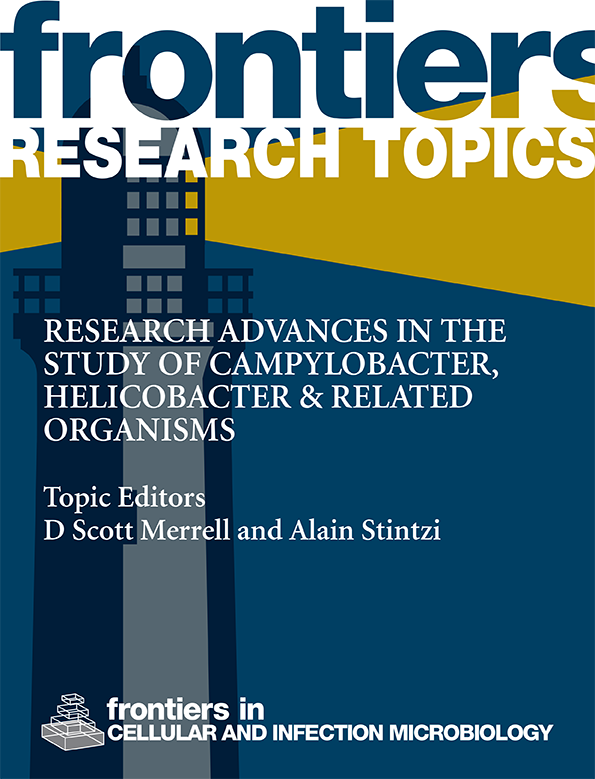中国深圳儿科感染大肠埃希菌中产ESBL国际克隆ST410的遗传景观
IF 4.6
2区 医学
Q2 IMMUNOLOGY
Frontiers in Cellular and Infection Microbiology
Pub Date : 2024-09-11
DOI:10.3389/fcimb.2024.1403234
引用次数: 0
摘要
背景产ESBLs耐头孢菌素大肠埃希菌分离株的出现对公共卫生构成威胁。本研究旨在破译儿科患者中属于高风险克隆 ST410 的产 ESBL 大肠埃希菌菌株的遗传图谱,并对其进行深入了解。方法从幼儿中收集了 29 株 ST410 大肠埃希菌分离株,并对其进行了抗菌药敏感性测试、全基因组测序(WGS)、血清型分析、MLST、ESBL 基因、毒力基因和质粒分析。结果抗菌药物敏感性检测显示,对头孢菌素类抗生素的耐药性较高,其次是氨基糖苷类、磺胺类、碳青霉烯类和青霉素类抗生素。不过,有 20/29 人显示出 MDR 表型。系统发育组以 B2 组(15 人)为主,其次是 D 组(7 人)、A 组(4 人)和 B1 组(3 人)。血清型分析确定了 O1:H7(n=8)、O2:H1(n=6)、O8:H4(n=5)、O16:H5(n=4)和 O25:H4(n=3)。发现的其他血清型包括 O6:H1、O15:H5 和 O18:H7(各 1 个)。最常检测到的 ESBL 基因是 blaCTX-M(n=26),其次是 blaTEM(n=23)和 blaSHV(n=18)。此外,还有 blaOXA-1 (n=10) 、blaOXA-48 (n=5) 、blaKPC-2 (n=3) 、blaKPC-3 (n=2) 、blaNDM-1 (n=4) 、blaNDM-5 (n=1) 、blaGES-1 (n=2) 、blaGES-5 (n=1) 和 blaCYM-1 (n=3)。在 ST410 分离物中发现的显著毒力基因包括 fimH(n=29)、papC(n=24)、hlyA(n=22)和 cnf1(n=18)等。结论 ST410 克隆表现出复杂的耐药性特征、多样的血清型、特异性耐药基因(ESBL 基因)的存在、毒力基因剧目和多样的质粒。blaCTX-M 是检测到的最普遍的 ESBL 基因。本文章由计算机程序翻译,如有差异,请以英文原文为准。
Genetic landscape of ESBL producing international clone ST410 of Escherichia coli from pediatric infections in Shenzhen, China
BackgroundThe emergence of ESBLs producing cephalosporin-resistant Escherichia coli isolates poses a threat to public health. This study aims to decipher the genetic landscape and gain insights into ESBL-producing E. coli strains belonging to the high-risk clone ST410 from pediatric patients.Methods29 E. coli ST410 isolates were collected from young children and subjected to antimicrobial susceptibility testing, Whole-genome sequencing (WGS), serotype analysis, MLST, ESBL genes, virulence genes, and plasmid profiling.ResultsAntimicrobial susceptibility testing demonstrated a high level of resistance to cephalosporins followed by aminoglycoside, sulfonamide, carbapenem and penicillin group of antibiotics. However, n=20/29 shows MDR phenotype. Phylogenetic group B2 (n=15) dominated, followed by group D (n=7), group A (n=4), and group B1 (n=3). Serotyping analysis identified O1:H7 (n=8), O2:H1 (n=6), O8:H4 (n=5), O16:H5 (n=4), and O25:H4 (n=3). Other serotypes identified included O6:H1, O15:H5, and O18:H7 (n=1 each). The most commonly detected ESBL genes were bla CTX-M , (n=26), followed by bla TEM (n=23), and bla SHV (n=18). Additionally, bla OXA-1 (n=10), bla OXA-48 (n=5), bla KPC-2 (n=3), bla KPC-3 (n=2), bla NDM-1 (n=4), bla NDM-5 (n=1), bla GES-1 (n=2), bla GES-5 (n=1), and bla CYM-1 (n=3). Notable virulence genes identified within the ST410 isolates included fimH (n=29), papC (n=24), hlyA (n=22), and cnf1 (n=18), among others. Diverse plasmids were observed including IncFIS, IncX4, IncFIA, IncCol, IncI2 and IncFIC with transmission frequency ranges from 1.3X10-2 to 2.7X10-3 .ConclusionThe ST410 clone exhibited a complex resistance profile, diverse serotypes, the presence of specific resistance genes (ESBL genes), virulence gene repertoire, and diverse plasmids. The bla CTX-M was the most prevalent ESBL gene detected.
求助全文
通过发布文献求助,成功后即可免费获取论文全文。
去求助
来源期刊

Frontiers in Cellular and Infection Microbiology
IMMUNOLOGY-MICROBIOLOGY
CiteScore
7.90
自引率
7.00%
发文量
1817
审稿时长
14 weeks
期刊介绍:
Frontiers in Cellular and Infection Microbiology is a leading specialty journal, publishing rigorously peer-reviewed research across all pathogenic microorganisms and their interaction with their hosts. Chief Editor Yousef Abu Kwaik, University of Louisville is supported by an outstanding Editorial Board of international experts. This multidisciplinary open-access journal is at the forefront of disseminating and communicating scientific knowledge and impactful discoveries to researchers, academics, clinicians and the public worldwide.
Frontiers in Cellular and Infection Microbiology includes research on bacteria, fungi, parasites, viruses, endosymbionts, prions and all microbial pathogens as well as the microbiota and its effect on health and disease in various hosts. The research approaches include molecular microbiology, cellular microbiology, gene regulation, proteomics, signal transduction, pathogenic evolution, genomics, structural biology, and virulence factors as well as model hosts. Areas of research to counteract infectious agents by the host include the host innate and adaptive immune responses as well as metabolic restrictions to various pathogenic microorganisms, vaccine design and development against various pathogenic microorganisms, and the mechanisms of antibiotic resistance and its countermeasures.
 求助内容:
求助内容: 应助结果提醒方式:
应助结果提醒方式:


